Most film festivals across the world are award-oriented. Then, there are organisations whose sole purpose is to bestow awards in different fields in cinema, such as the Academy Awards in the United States, and the Filmfare Awards in India. Both kinds of awards are anxiously looked forward to by the film fraternity, and there are many filmmakers whose sole aim in making films is to bag awards at film festivals across the globe.
The Mumbai International Film Festival (MIFF), started in 1990, is a premier documentary film festival in India. Held biennially, it is the largest festival of its kind in South Asia, in terms of the number of entries it receives. The 15th edition of MIFF was held between 28 January and 3 February, 2018 at the Films Division Complex in Mumbai; some of their beautifully maintained screening theatres are still under construction. The highlights of the festival, organised by the Films Division under the auspices of the Ministry of Information and Broadcasting, were: the screening of 500 films from more than 40 countries, which covered 43 films in National Competition; 24 films in International Competition; Special Packages from Canada, Cuba, Mexico, Germany, Iran and the Phillipines; animation films from Brazil, Russia, Turkey, Japan, French Shorts, North East, Jammu and Kashmir; and, apart from the master classes, there were workshops and lecture demonstrations by eminent filmmakers. The award money amounted to Rs.58 lakhs, possibly the highest in the world in the scheme of the documentary and short film scenario.
It would be very interesting to focus on some outstanding films that did not make it to the winning post but had wonderful stories to tell, while also revealing a command over the language of the filmmaker’s choice — the language of cinema as told in the documentary format, which involves stories captured live and then placed on record through digital filming; or, short films; or, docu-fiction, which is a blend of these two; and, last, but never the least, animation films, which, sadly, appear to be in a nascent stage in India right now, going by the scant number of entries in this segment.
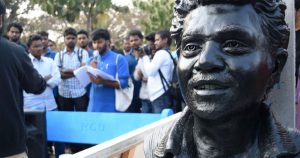
Campus Rising (2017) is a very significant, 74-minute documentary by Yousuf Saeed, an independent filmmaker. The film explores how students and staff belonging to marginal classes, minorities, and women, are subjected to social discrimination and thought control. The film travels to six Indian universities to record the voices of students, and also some teachers, from different backgrounds and ideological leanings. The film highlights students’ movements that resolve not to give up till the rights of the underprivileged are recognised. It is an extremely relevant film, for our times, considering the increasingly volatile ambience in Indian universities across the map, where violence, overt and covert, is the language used by the university authorities, and by people in power, to restrict the intellectual and democratic spaces that educational institutions should actually nurture. Saeed, however, in spite of a near-full theatre, lamented the fact that his film was scheduled for a night show when the footfall is low; what made it worse was that on the day his movie was to be screened, there was also a party. It is a very real film that holds up a mirror to the present situation in most universities in the country. The film has extensive interviews with students from Jawaharlal Nehru University (JNU), Banaras Hindu University (BHU), Hyderabad Central University (HCU), Jamia Milia, Islamia, and Aligarh Muslim University (AMU). According to the students, the minute they demand their rights as students and question any intrusion, they are censored, curbed, penalised, or castigated in a hundred different ways.

Memories of a Forgotten War, directed by Utpal Borpujari, presents an amazing amount of global, historical, and environmental research into an area that few of us have even heard about, much less read about. It maps a journey of memories into the battles of World War II that were fought in the remote mountains and valleys of Manipur and Nagaland in North-Eastern India. It has been filmed extensively in Manipur, Nagaland, the United Kingdom, and Japan, with some scenes having been filmed in New Delhi, Mizoram, and Arunachal Pradesh. The film goes back and forth in time, again and again, travelling from the past to the present to the past again. We are introduced to two former soldiers, one who fought for the British military and the other a member of the Japanese army, who were pitted against each other during the war, now holding hands, smiling, and participating in a silent mourning for all those who had lost their lives. Borpujari turns the clock back to 1944, when Japanese troops advanced on British India from Burma, but were pushed back by Allied Forces in the Battle of Kohima and the Battle of Imphal. An estimated 168,000 people died during the violence, with disease, more than the warfare, felling the Japanese troops. The defeat was a turning point for the Axis Powers in World War II.
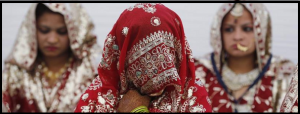
3 Seconds Divorce, directed by Shazia Javed of Canada, narrates the tragic story of Muslim husbands divorcing their wives without even thinking about its consequences for the family and the children. It is critical of the practice of halala, which demands that a divorced woman marry another man and consummate the relationship, and then divorce him, if she wants to remarry her previous husband; her previous husband has to agree to this. The film tells tell this story through the journey of Lubna, a present day activist and former victim of triple-talaq, who makes personal sacrifices to continue her activism. The documentary also provides a behind-the-scenes glimpse at the growing Indian Muslim women’s movement, as it navigates between orthodox Muslim leadership and a polarised political environment in India. It also follows the journey of the Mumbai-based organisation, Bharatiya Muslim Mahila Andolan, of which Lubna is an important founder-member.
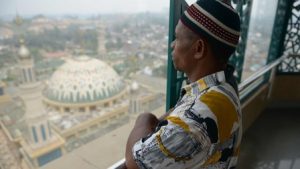
Abdul and Jose (Australia and Indonesia) is jointly directed by Luigi Acquisto and Lurdes Pires. It is an extremely informative and educative film whose story takes place during Timor’s brutal occupation by Indonesia, when thousands of children were kidnapped and much of the country’s rich resources were appropriated. The film explores the relationship between Jose and his Timorese family, to find out whether the tensions created by the war with Indonesia affect their relationship, or do they — Catholics and Muslims — accept each other. The tragedy of this real story is that Jose’s Timorese family believed that he had died, having even held a kind of ritualistic ceremony to bring peace to the dead soul. So, when Jose returns, now a grown-up adult, his family has to go through another ceremony to bring him “back to life.” Though this is a documentary, it strikes a chord with its nostalgic and emotional content, and is a well-told tale of the ambiguous identities of a single individual, identities forced on him by war. The Indian audience, which comprises of a sizable diaspora, could identify with the concept of trying to come home but failing to.
Kamal Swaroop’s 52-minute bio-pic, Atul, on the noted painter Atul Dodiya, was mesmerising in and showed Swaroop’s complete restraint as the director. He allows the artist-painter to narrate his own story, his evolution as an artist and painter who — after suffering from partial vision loss, as a result of a freak accident, as a boy — was able to explore different avenues of art that eventually established him as one of the greatest contemporary Indian artists. Dodiya’s art, and how he relates to the world around him is, is influenced by the time he spent in a Ghatkopar chawl as a child, a time he remembers warmly. This film, through his paintings and the elements in them, constructs a story of the artist’s life, to understand the artist behind the paintings and his concerns. In doing so, it also shows glimpses of the artist’s intuitive sense and mastery of form and craft. His paintings of rolling shutters, doors within doors, windows within windows, all trace his constant search for new avenues of creative expression.
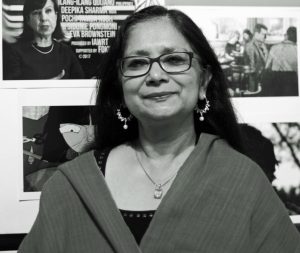
Velvet Revolution, which is produced by the International Association of Women in Radio and Television (IAWRT), is about women journalists who work to bring underreported news to the public, sometimes at a great personal cost. In a world driven by conflict and dictatorial regimes, where journalists are constantly under threat of both state and non-state actors, what drives these women journalists to do their jobs? The documentary profiles women journalists who have paid a high price for speaking truth to power. Velvet Revolution is a unique collaborative venture supported by IAWRT where the Executive Producer, Nupur Basu, worked with women directors from four countries.. They are Illang-Illang Quijano (Philippines), Deepika Sharma (India), Pochi Tamba Nsoh and Sidonie Pongmoni (Cameroon), and Eva Brownstein (USA/ Bangladesh).
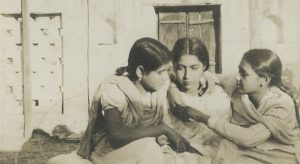
Academician, historian, and scholar Uma Chakravarti’s Lucknow 1920 – 1949, or, Ek Inquilab Aur Aaya, explores the frustrations, ambitions, and struggles of women who lived in an orthodox Islamic household in Lucknow in the first half of the 20th century. It traces the lives of two women, Sughra Fatema, and her niece, Khadija Ansari, both residents of the Firangi Mahal. The family which resided there had been at the centre of learning in Lucknow from 1695 onwards. This was, perhaps, among the most outstanding and memorable films in the entire festival. Shot entirely in black-and-white, it unfolds two forgotten, or, perhaps, invisible stories, from our history. Through the two residents of Firangi Mahal, an institution for rationalist Islamic scholarship founded in the late 17th century, the film tells the hitherto unknown stories of women and their struggles as they adapt and come into their own in a time of dramatic changes. One wrote poetry to express herself, while the other became a student activist who went to jail for being a revolutionary.

Renowned Assamese filmmaker Jahnu Barua’s short fiction, That Gusty Morning, deals with a young girl who feels desperately trapped because of her mother, who is slowly slipping into Alzheimer’s, and her own dimming prospects of marriage because of her mother’s illness. It is a moving film that holds up family values without disturbing the equation between the parent and the daughter, on the one hand, and the entire family and the prospective groom, on the other. Moving performances, by Seema Biswas, as a mother who vacillates between memory and the loss of it, and the other actors brings across the pain of a family in deep distress.

Anshul Tiwari’s Wabi-Sabi is a moving, but quite disturbing, film about the fragmentation of a mother-daughter relationship, with the ambitious daughter’s moving out, in order to become an actress, making her lonely mother sick and depressed. When the daughter returns, she tries her best to revive her mother’s spirits and memory with one last performance. This short fiction on celluloid is a telling metaphor for modern family relationships where a single parent is often confronted with the slow distancing of an only child.
Vaishali Sinha’s bio-pic, Ask the Sexpert, is a delightful exposé about a famous columnist, Mahendra Watsa, from Mumbai, who has been running a sex advice column in an afternoon tabloid for many years. Although he was 93 at the time of the filming, he bubbled with energy and pepped up his interviews with his witty and dry sense of humour. He talked about how people often approach him in person, with their problems relating sex, and how he answers them with a straight face. His grown-up children aren’t very comfortable with this, but he continues with the work, nonchalantly, living alone in a small apartment and readily responding to the questions, of which there is no dearth.
Thankamma is a 14-minute documentary directed by Ramabhadran. Though she is in her 90s, she continues to ferry people across a small canal, and a river, that lie close to her ramshackle house, in order to make ends meet. It is a telling portrait of the self-respect and dignity that a woman or man of any age is capable of. It is a film filled with hope and optimism. It focusses on her daily life, as she cooks her own food, fetches the ingredients to feed herself, and generally goes about her chores, without asking for help of any kind.
It would be in the fitness of things to sum up with one of the most outstanding investigative documentaries screened at the festival, which also bagged the National Award, i.e., Eyes of Darkness, directed by journalist-turned-filmmaker Amitabh Parashar. The story — a true one — carries the shocking revelation that the extra judicial blindings in Bhagalpur, Bihar, that shook the entire nation in the 1980s, have started an unending cycle of blindings, merciless and brutal in nature; the victims are often people who have a criminal record themselves. The local population today, as it appears in this film, seems to have taken law in their own hands, to blind the very people —for instance, ex policemen — who blinded their own kith and kin. Parashar’s film is mainly focussed on the victims between 2012 and 2016. Parashar followed many of the victims of mob blindings, and at least ten talk about their tragedy on camera. Among them are two little boys, one of whom has now quit school, who have been receiving threats from the person who blinded their father, threatening to blind them too. “If we add up all the newspaper reports on such incidents, the number would be at least 30,” says Parashar.




